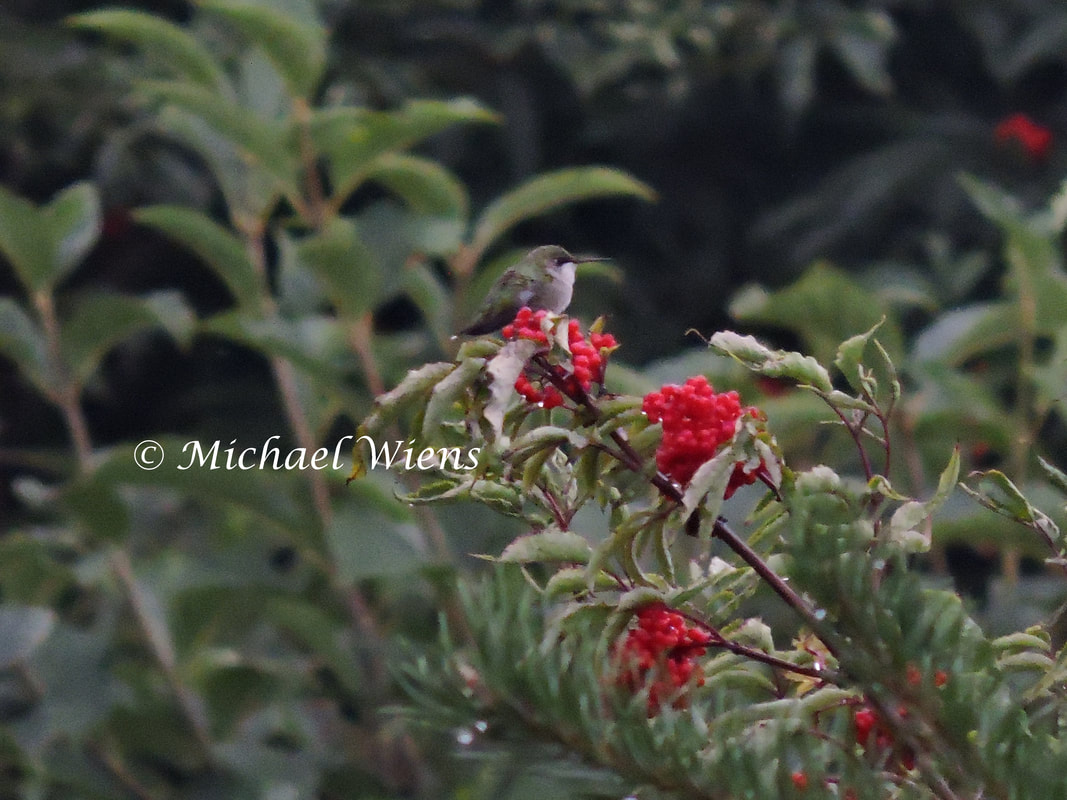Humming Blog |
 All of us are thrilled to see that first hummingbird arrive in Spring, but then many experience disappointment of not seeing a bird for a long period of time. The question that arises is "will I see it again". Then later in summer, many see a hummingbird show up in their yard, and the first assumption is "my hummingbird has returned," but is it really the same bird? Physical attributes can make it very difficult to tell them apart unless you closely examine the bird or it has an odd feature that tells it apart from all the rest. If you have a male that sticks around all summer, or a female that shows up once in a while to check up on her food source, it's easier to know which birds are yours, but when the young leave the nests across the country things get real complicated in telling them all apart. Birds will find food sources and fight for them. They will locate perches to sit and protect those food sources, and when they do, you will be able to differentiate one from another. But then that same bird isn't using its perch anymore. It appears as though it has another favorite spot. In all likelihood, that bird you had has moved on and another has replaced it. It is possible it's located several favorite perches, but one crucial thing to understand is that once the young leave they nest they now become a migrant bird. They may stick around for only hours up to a week or 10 days at the longest, before moving on. As some show up in your garden, others leave. You may have chaos in your garden because a migrant or more have shown up and are trying to feed, and your locals aren't impressed. My male population started at 3 in Spring, with one dominant one. Then 2 disappeared. Oh, they're back...or are they? Upon close examination they were entirely different males. This happened repeatedly over the last 24 days, and is something I've witnessed for years. One male might be an original, but I know for a fact the others have been replaced a few times already. I can tell by how the current males react when a new coming adult male arrives. They develop a common respect for each other and know not to feed at the other's feeder, but when a new one shows up, he'll freely try out all feeders in sight, and this goes against the rules. The new comer will learn quickly and try and find a feeder that isn't dominated by another adult male or mature juvenile male. He will compete and eventually fit in. Late in the season things change dramatically. Their purposes change and the young have a different plan than what the adult birds had throughout summer. They basically feed, fatten up, and then migrate. This is how we develop a migrant population over time. You will see the migration period extended well beyond just your local birds. You will have females stop by even though they nest hundreds of miles north of you, and you will see your number of migrant adult males increase over time. Just because your local male/males have left doesn't mean you won't have many more show up. This should be a comforting thought for everyone. You are more than likely seeing different birds, and have a much higher population than you suspect. And, just because you see 10 birds at a time in your yard, doesn't mean you're seeing all the birds you have. They come and go, move around, perch, feed, and not all at the same time. Here sits a youngster that chose the most unusual place to perch. It used the berry cluster for a few days, disappeared for 2, and then was back for one day. It was the one clear indication it was the same bird besides it's behavior. Juvenile Ruby-throat hummingbird. August 16th, 2017 N.E. of Edmonton, Alberta, Canada.
1 Comment
June Jones
8/20/2017 08:43:11 pm
It has been a full week since I've seen a
Reply
Leave a Reply. |
Archives
June 2023
Categories
All
|
 RSS Feed
RSS Feed
